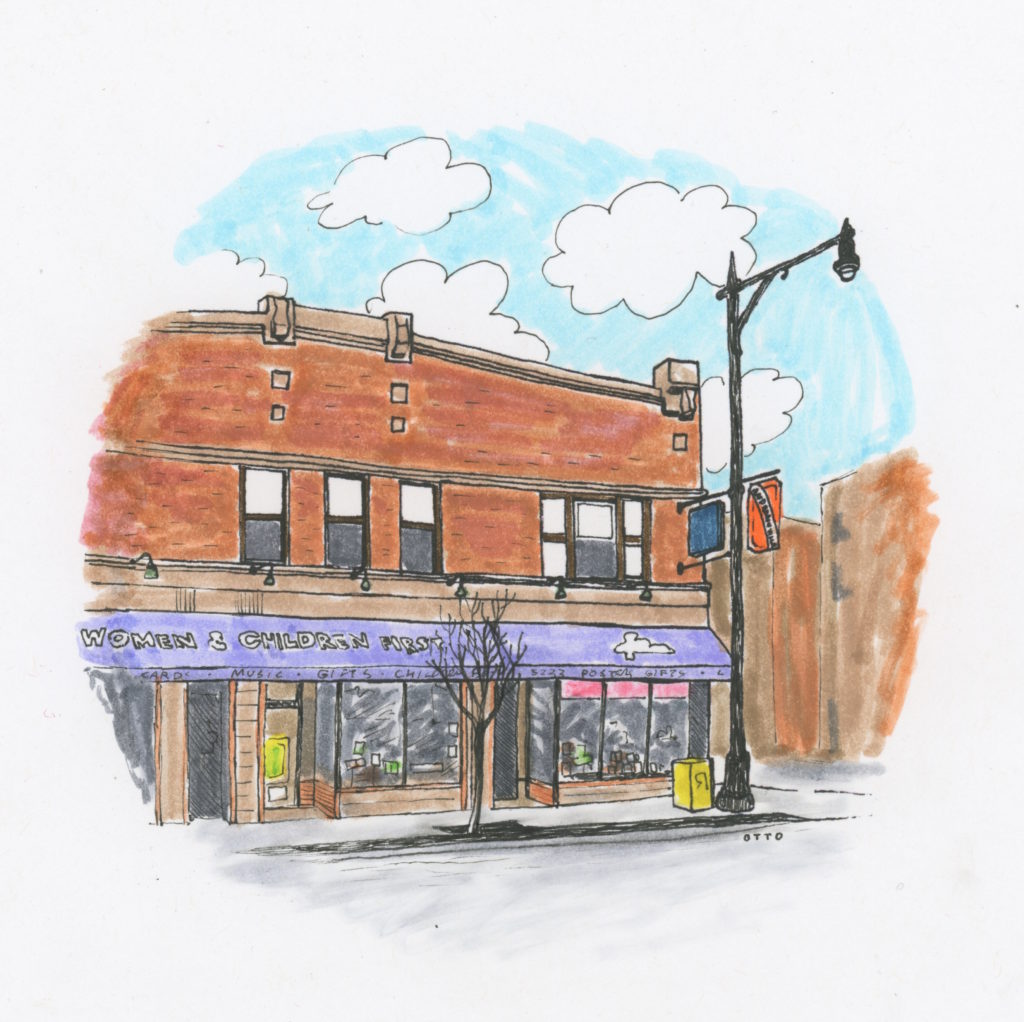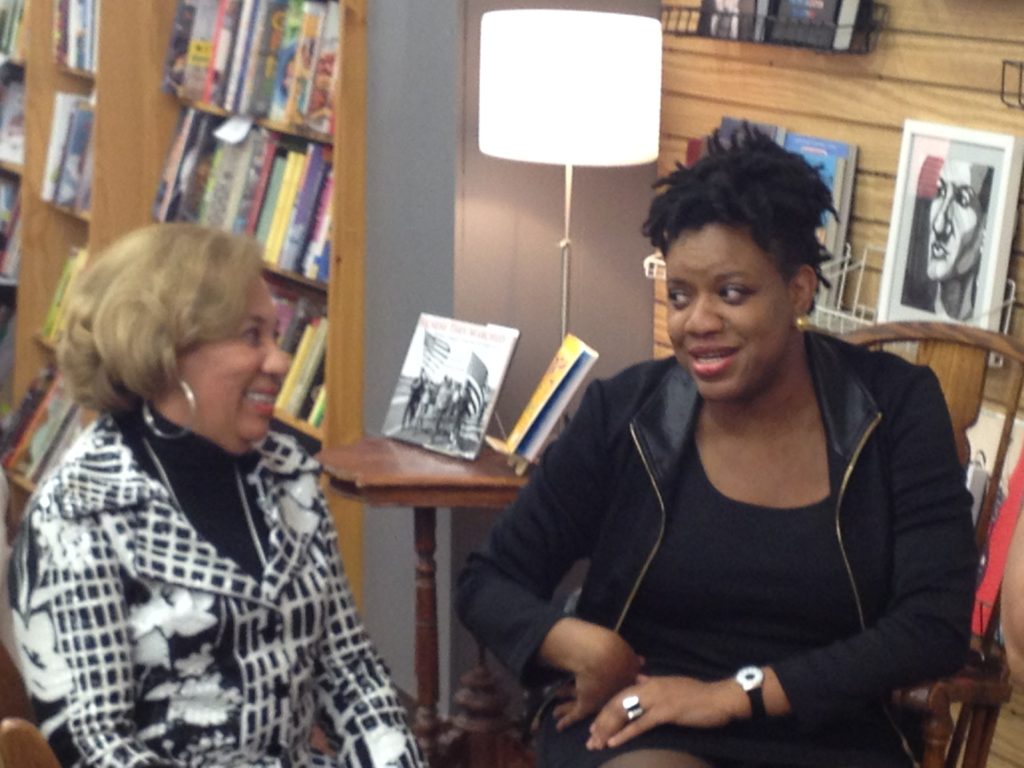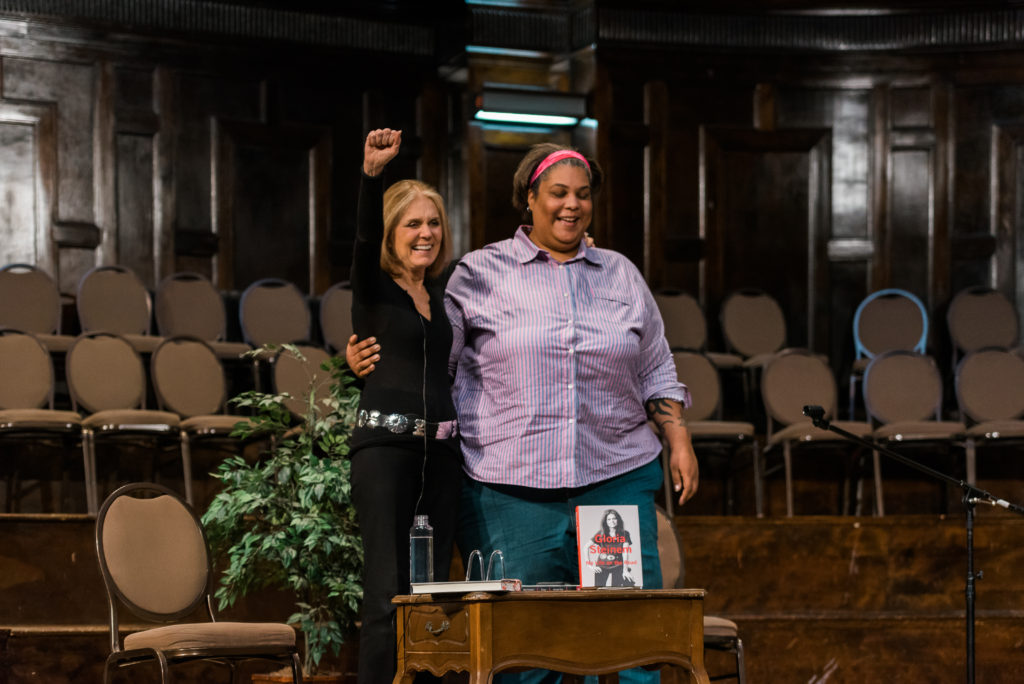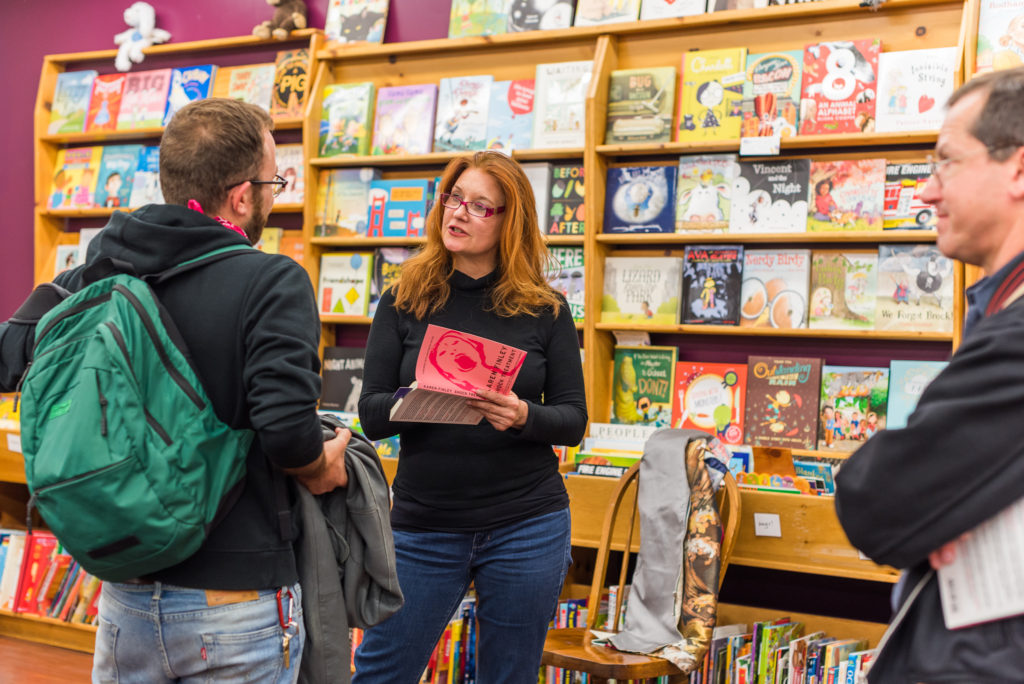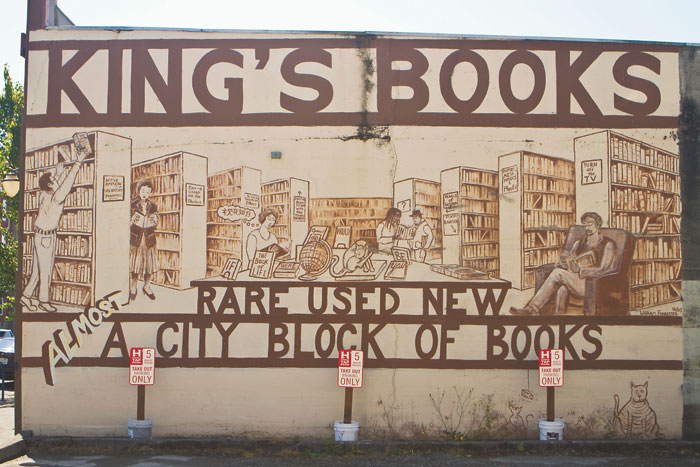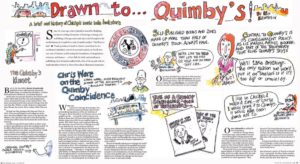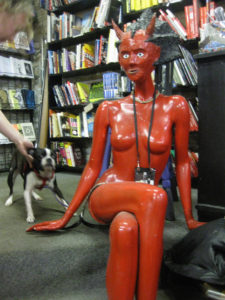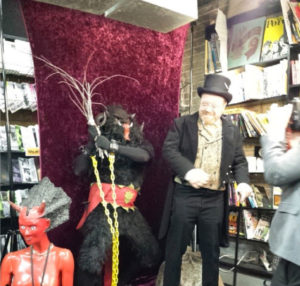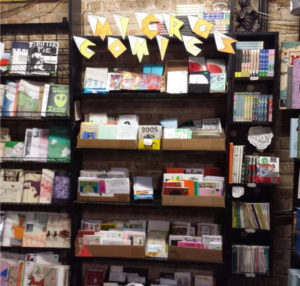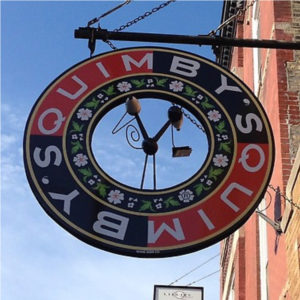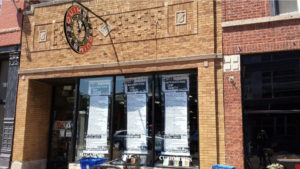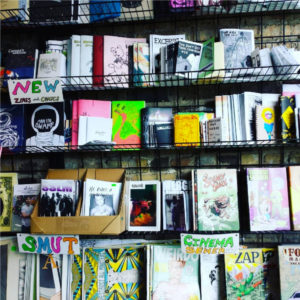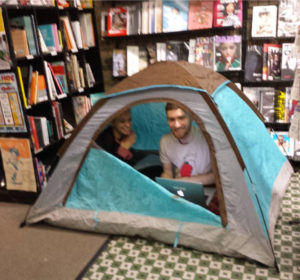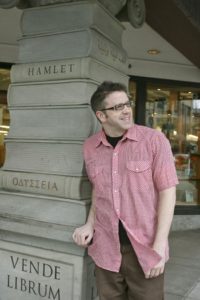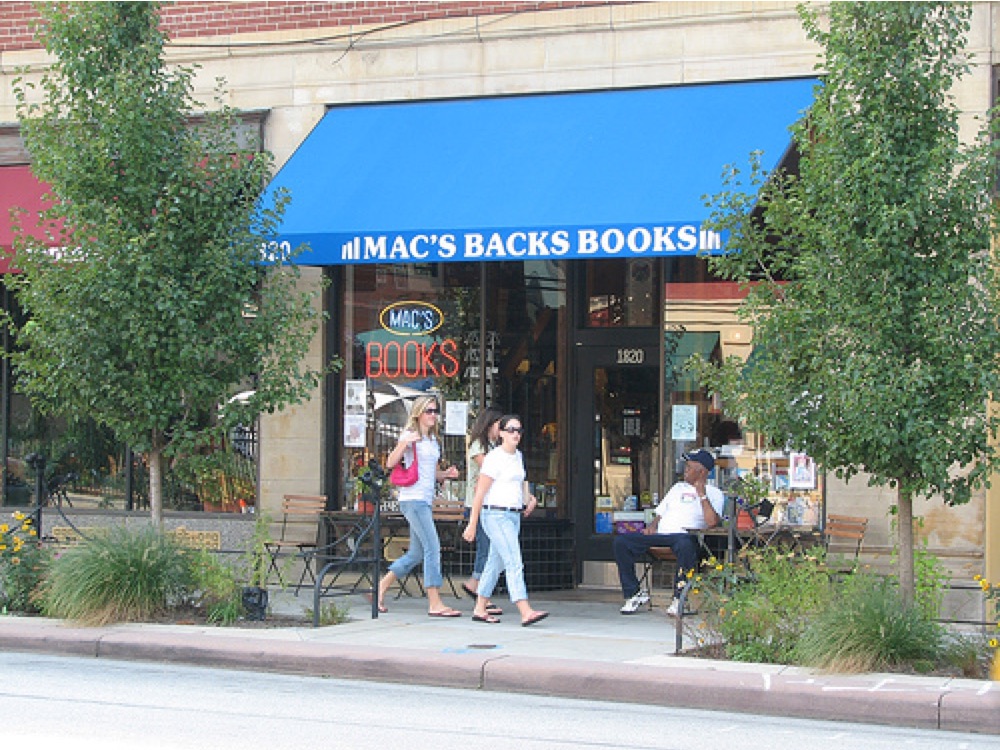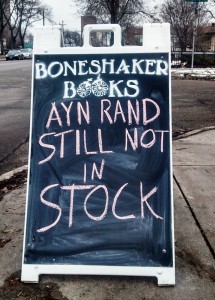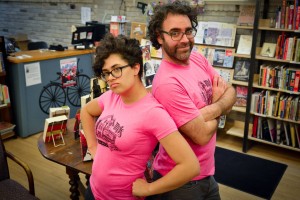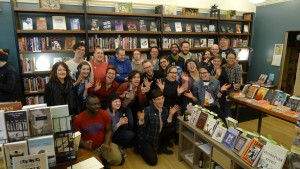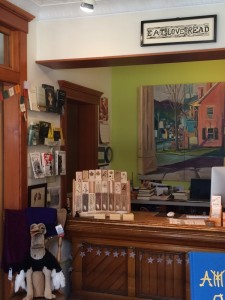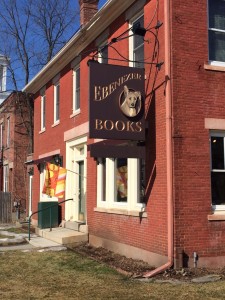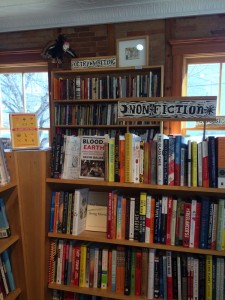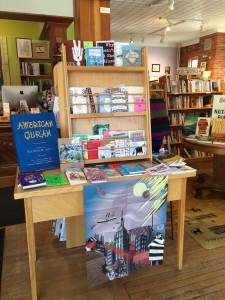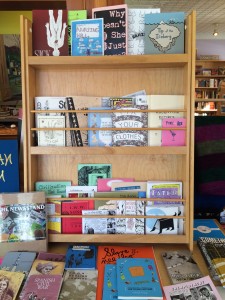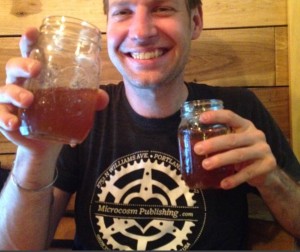We are Breaking Up with The Big Boys
We’ve been holding on to a bit of news lately, and we’re excited to finally share it with you all! Here’s founder Joe Biel with the details…
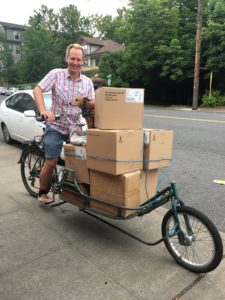
Joe & Ruby deliver books by bicycle.
Starting January 1, 2019, we will be managing our own distribution just like we did for over ten years. Not only will we no longer need to move thousands of books back and forth between warehouses, creators get paid more for each book sold. And we won’t be selling to Amazon. Why. you ask? Well, my grandparents were German immigrants who came here in the 1800s for labor unions and worked to achieve the 40-hour work week…which was then abolished in our lifetime. When Microcosm was just getting off the ground in 1997, I interviewed Ian Mackaye of Dischord Records. He explained that a publisher is only as independent as their distribution is. He was seemingly taking a jab at “independent” labels who handle all of their manufacturing and distribution through a major but his point sticks.
Microcosm has always tried to work with independent companies, because they feel most comfortably aligned with our mission, values, and goals…but we’ve watched over the past dozen years as each independent distributor gets gobbled up and responds to the demands of the increasingly demanding monopolies.
We’ve watched as our peer publishers either throw in the towel or sell to one of the monopolies, neither of which we are willing to do. We feel that independents need to be independent and the best way to do that is to build an outpost of our own, a shining star where we can continue to thrive instead of relying upon the whims of any global corporation.
So we are returning to our roots to create the world that we want to see within our weirdo clubhouse.
We will be parting ways with Legato/PGW/Perseus/Ingram in January and have already built new warehouses and software to make this possible. Few events in the history of Microcosm have improved our morale and brought our staff together like this has. As always, our intent is to expand our distribution at the same time. Our new sales people (now a team of four) excitedly understand our books and have more time and focus to dedicate to them. For the first time ever, our back catalog will receive as much attention as our new releases. Within a few years, we intend to begin offering these services to other publishers.
This isn’t as staggering a change as it sounds. Reviewing the numbers, we have come to realize that we know better how to distribute our books than anyone else that we’ve tried to partner with. We’ve handled roughly 75% of our distribution even across these past seven years. The simple fact is that the underground is much bigger than the mainstream.
To ensure that we are still actually serving all of the stores and readers that are interested in our books, we’re bringing on Book Traveler’s West (West Coast), Como (East Coast), and Fujii (Midwest) to actively visit and solicit our books to stores. We will continue to be distributed by Turnaround in Europe and will be working with the same distributors in Australia, Canada, and the rest of the world as well. Readers and stores can still buy books directly from our website, microcosmpublishing.com.
We are redoubling our efforts to sell direct and to independents instead of helping monopolies like Amazon continue to grow at the expense of others. Perhaps more importantly, we will not be accepting their terms that increasingly just serve to crush everything in their path. If you want to help support the indies during this crucial time, go to your local shops and buy books, and encourage your friends to do the same. They will remember moments like this forever.
We hear from people almost every week that our books are saving their lives, and we feel that we have an obligation to extend that as far and wide as possible. There’s an unspoken rule in the underground that what we do is secret but when these rules don’t serve the goals, we have no choice but to break them.
Joe’s next book, A People’s Guide to Publishing, can help anyone inspired by our journey learn the lessons and wisdom that got us here today.
Check out the kickstarter project here!
Read the more industry-jargony version of this news with more details on Shelf Awareness.
Or, if you want to know more about what this’ll mean, check out Elly’s breakdown.
If you ever need help with ordering, please contact Sidnee Grubb | Customer Service (1-503-799-2698). For press questions, interview or sample requests, contact Cyn Marts, publicity director, cyn@microcosmpublishing.com.
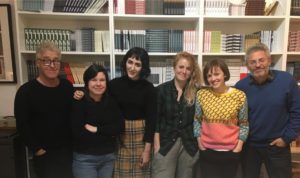 As part of our Year of Independence, we’ve been interviewing independent booksellers who we love. This month, instead of a bookstore, we’re turning to
As part of our Year of Independence, we’ve been interviewing independent booksellers who we love. This month, instead of a bookstore, we’re turning to 